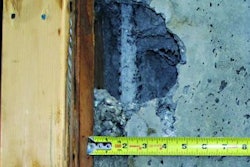Washington, DC (August 16, 2011) -- Associated Builders and Contractors (ABC) reports that its Construction Backlog Indicator (CBI) increased 10% in the second quarter of 2011 to an average of 8.1 months, up from 7.3 months the previous quarter. The CBI is 12% higher than one year ago. CBI is a forward-looking indicator that measures the amount of construction work under contract to be completed in the future.
"While the increase in construction backlog appears to be good news at first glance, taking a broader look reveals that the rise in the nation's construction activity may be a reflection of the economic momentum that existed several months ago, but is now beginning to weaken," said ABC Chief Economist Anirban Basu.
"The nation's economic recovery has remained fragile since June 2009 and any observed recovery in construction volumes has been tentative," Basu said. "The events of the last few weeks have had a negative impact on both the overall economy and the nation's construction sector, with business leaders generally seeking to reduce exposure to risk and investment volatility.
"More specifically, the U.S. economy continues to be pummeled with a sea of constraining factors ranging from rising gas and food prices, to Washington's stalemate on lowering the nation's deficit, the downgrade of the U.S. credit rating, Europe's growing financial crisis and the U.S. financial market turmoil," said Basu.
"None of this is good news for construction contractors or others hoping for a far ranging, more aggressive economic rebound. Though average construction backlog has been on the ascent in recent months, future surveys are likely to reflect a reversal of the trend and may lead to a chill in the nation's building recovery," Basu said.
The South continued to report the lengthiest construction backlog of any major region, with project orders rising 1.87 months during the second quarter compared to one year ago.
Construction backlog in the Middle States continued to expand, growing by .25 months, or an 11.8% increase from the second quarter of 2010.
The Northeast reported the smallest construction backlog increase of .04 months from the same period last year.
The West experienced a modest construction backlog increase of .61 months from one year ago.
"The good news is that construction backlog has expanded in all regions, which means that contractors in much of the nation are busier now than they were a year ago, particularly in the South," said Basu. "The Middle States continue to be associated with rising average construction activity, largely a reflection of renewed competitiveness within the U.S. auto industry, as well as the ongoing expansion of the nation's food producing and distribution sectors. In contrast, the Northeast is associated with more expensive labor and greater dependence on government spending, yielding a smaller construction backlog increase."
The quarterly increase in construction backlog was fueled by only one of three major industry segments monitored by ABC – the commercial/institutional building sector – in which backlog rose from 7.3 months in the first quarter of 2011 to 8.6 months in the second quarter.
Backlog in the infrastructure category has declined for four consecutive quarters, likely the result of the steady decrease in the impact of the stimulus package enacted in February 2009.
Construction backlog in the heavy industrial category declined 18% during the second quarter following three quarters of stable activity.
"The improvement in commercial and institutional construction backlog is a reflection of economic recovery, the ongoing exchange of property from thinly capitalized owners to well-capitalized ones, and moderately easing lending standards. This rise indicates that some semblance of normalcy has been returning to the U.S. construction sector," Basu said. "Job growth in the United States had been accelerating leading up to the second quarter, increasing both demand for work space and bolstering confidence. However, the decline in infrastructure backlog remains predictable given the fading impact of stimulus and ongoing fiscal difficulties among most state and local governments throughout the United States."
During the second quarter of 2011, construction backlog rose for all categories of firm size with the exception of those with revenue exceeding $100 million.
Average construction backlog was highest at 9.8 months among firms with revenues between $50 million and $100 million.
Smaller firms are now experiencing meaningful increases in construction backlog, with average backlog rising from 6.4 months to 7.5 months during the second quarter among firms with revenue of less than $30 million.
"With many large infrastructure projects winding to a close, the largest firms in ABC's sample have predictably experienced some decline in average monthly construction backlog," said Basu. "The broadening of the economic recovery during the period prior to the second quarter of 2011 helped support smaller firms, many of which are subcontractors that work on commercial and institutional projects. With the economy weakening in recent months, construction backlog among these smaller firms may begin to decline again."
To read more about the latest CBI, click here.
Associated Builders and Contractors (ABC) is a national association with 75 chapters representing more than 23,000 merit shop construction and construction-related firms with nearly two million employees.

















